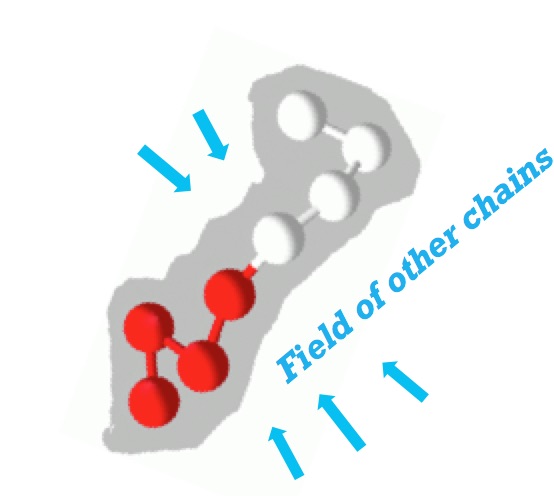Coarse grained models are becoming increasingly popular to study systems of lipids and surfactants, which means reducing the number of degrees of freedom. Thus, in any coarse grained model there is a trade-off between accuracy in the description of the system and the gain in simulation time and length scales. Coarse grained models can be either on-lattice or off-lattice. The off-lattice model allows to include some properties more easily such as spherical particles or hydrodynamics. Smit et al1,2 have proposed a off-lattice model for an oil-water-surfactant system, in which micelles made of amphiphilic molecules form spontaneously in the water phase and a monolayer of surfactants forms at oil/water interface. Marrink et al have introduced a coarse grained model in which small group of atoms were represented by single interaction sites, reducing the number of degrees of freedom in the system together with the use of short range potentials makes it computationally very efficient. Lennard-Jones, harmonic, and electrostatic interaction parameters were adjusted to match independent data from model compounds3. Compared to atomistic models, Marrink et al. achieved a gain in computational time of 3-4 orders of magnitude.
Current coarse grained models could be performed by molecular dynamics and dissipative particle dynamics simulations. We use MD to study dynamic properties of lipid bilayer, which are performed using LAMMPS4 in current work. First a three-dimensional structure of lipid bilayer and water molecules is built based on the experimentally known geometries. The model system is confined to a three dimensional rectangular box with periodic boundary conditions. Then the system is equilibrated, which means Newton’s equations of motion are solved for all the atoms until the macroscopic properties of the system no longer change with time. After equilibration the actual measurements are performed5.
References:
-
Smit, B.; Hilbers, P. A. J.; Esselink, K.; Rupert, L. A. M.; Van Os, N. M.; Schlijper, A. G. Nature 1990, 348, 624.
-
Smit, B.; Esselink, K.; Hilbers, P. A. J.; Van Os, N. M.; Rupert, L. A. M.; Szleifer, I. Langmuir 1993, 9, 9.
- Marrink, S. J.; Vries, A. H. D; Mark, A. E. J. Phys. Chem. B 2004, 108, 750-760
-
Plimpton S. Fast parallel algorithms for short-range molecular dynamics. J Comp Phys 1995, 117:1. http://lammps.sandia.gov/.
-
George Khelashvili. Theoretical and Simulation Study of Lipid Membranes. ISBN 978-3-639-00140-2.

